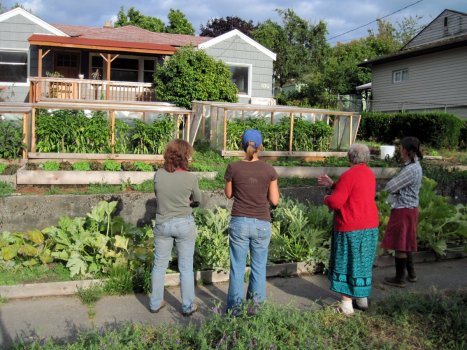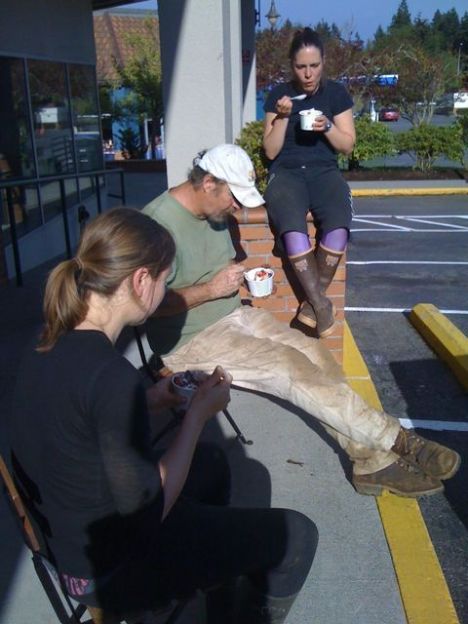
I’m taking slow food to a whole new level. Want to eat some delicious cornbread? First, plant some corn.
I had asked Luke and Adam here at Oxbow for permission to grow a little garden. “Since I’m from the midwest,” I said, “I’ve been feeling the urge to have a cornfield in my front yard. It’s okay for me to bring in some nice super-sweet, GMO, RoundupReady Monsanto corn, right? That way we can bring this hippie organic farm into the new millenium.” Pause. “Ummm, haha, just kidding! Actually it’s some saved seed of an heirloom dry corn that I want to grow so I can grind it for cornmeal. Can I till up a little area to grow a few stalks?” The farmers breathe a sigh of relief 🙂
“Sure,” they told me, “and in fact, you don’t even have to prep your own ground. Have this huge corner of the field we just tilled for squash planting. It’s extra, we were just going to leave it fallow, and it’s right in front of your yurt.” Wow! Just a small instance of the principle that if you decide what you want and make it known, all the pieces will fall into place.
Betsey had introduced us to skillet cornbread on the farm last year. It’s pretty special — with buttermilk and butter in the recipe you can’t really go wrong but it’s the freshly-ground heirloom dry corn that makes it magical. I shelled and ground a bunch before leaving Bainbridge and brought enough for a few batches out to Oxbow. Everyone I’ve made it for so far has kind of flipped out when they tasted it. Warm and chewy and with a grainy toothsome quality, sweet and salty and with a drizzle of honey… it’s pretty allright.
At this point I’m almost out of my cornmeal. Time to restock my stash — time to carry on the Betsey tradition and grow the stuff myself. I picked up some seed corn from Betsey last weekend: a couple ears of her Painted Mountain and some loose kernels of Roy’s Calais Flint. Two heirloom varieties with cool coloring patterns and interesting histories about where and how the varieties were developed.
As soon as I got the corn home I trundled it out to the greenhouse, put soil in a couple of 50-cell flats, and popped in 100 multicolored kernels. There was something so viscerally satisfying about planting these seeds with the end goal very clearly in sight. There is something super exciting about the prospect of tending this corn, my very own crop in the midst of all the other farm crops that I’m helping with but by no means in charge of. I read up on corn cultivation tips. It is a heavy nitrogen feeder, said google. Make sure you fertilize every couple of weeks. Am I going to have to go out and buy fertilizer? Anothrt google, this time on “rabbit manure”, turns up the info that bunny pellets are extremely nitrogenous and also are unusual in that they do not need to be composted before being used as fertilizer on the field. Boom. A complete system here in miniature, yurt-scale farming.
Here’s a picture of step one in my cornbread recipe. Stay tuned for updates and if you’re lucky you can help me enjoy a skilletfull sometime around the October timeframe!
Filed under: Uncategorized | Tagged: corn, cornbread, dry corn, organic farming, self-sufficiency, slow food | 3 Comments »































